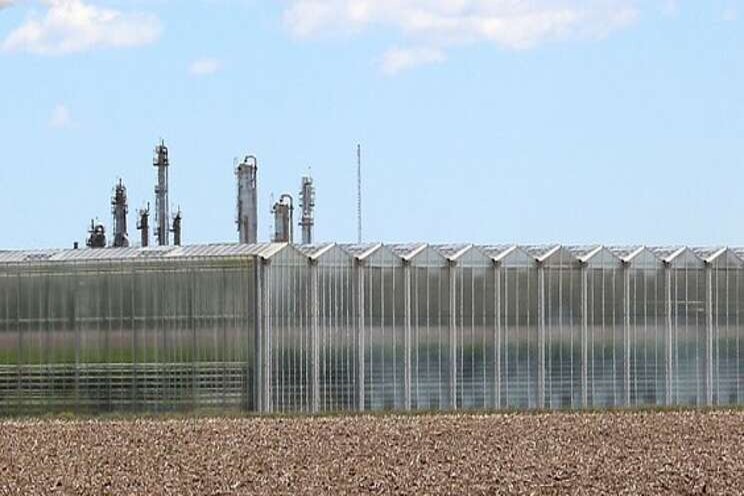Chatham-Kent presses pause on new greenhouse developments
Added on 17 May 2021

Located in Southwestern Ontario's greenhouse belt, Chatham-Kent is temporarily halting all new hothouses near built-up areas until it can figure out how to cut light pollution from the massive structures.
Spurred by the rapid pace of development in the municipality - greenhouses in Chatham-Kent now account for 370 acres or about nine per cent of Ontario's total greenhouse area, up from 168 acres in 2011 , and could soon eclipse 600 acres - the bylaw pauses new industrial-scale operations near its towns and cities to protect urban centres such as Chatham and Wallaceburg from excessive, obtrusive light.
The problem has been compounded with the size of these operations from an average of five to 12 acres to 20 to 50 acres, officials said.
"This trend in greenhouse size has led to farms in the community containing 50 to 200 acres of greenhouse development in 2021," a staff report noted. "In the future, construction may exceed 100 acres at a time, which is expected to lead to complexes of 100-plus acres of contiguous farmland being developed with greenhouses."
With the new bylaw in place, staff will begin talks with the public, the greenhouse industry, agricultural associations, Indigenous communities and other government bodies about possible approaches to limiting the amount of light emitted from greenhouses.
A report is expected back at Chatham-Kent council for its Sept. 20 meeting.
Joe Sbrocchi, general manager of the Ontario Greenhouse Vegetable Growers, said light abatement is something his organization has been working to address.
"We have never ever said we should be free to light up the sky," he said.
However, Sbrocchi said his organization is struggling with a similar issue in Leamington, where that town council passed a bylaw demanding 100 per cent light abatement from greenhouses.
The position of the Ontario Greenhouse Vegetable Growers, which represents operations that produce tomatoes, cucumbers and peppers, is that greenhouses need a maximum of 10 per cent "gapping" in their ceilings to allow heat and humidity to escape.
Since crops in greenhouses are grown upwards, meaning the newest and most delicate buds are at the top of the plants, "that's where the heat and humidity can do the most damage," he said.
If people understand the requirements of growers, Sbrocchi said he was confident most would accept this "10 per cent" solution.
"That's a maximum opening (for light)," he said. In winter months, when the temperatures drop below freezing, he said only a three per cent gap is generally used.
Chatham-Kent doesn't have any current applications for new developments, said Bruce McAllister, the municipality's community development manager, while the final phase of the Truly Green greenhouse in west Chatham is exempt from the bylaw.
The application of any new light-abatement bylaws on existing greenhouses, he added, would ultimately be driven by the consultation process. He did note, however, that bylaws in neighbouring Essex County communities do apply to both existing and future greenhouse developments.
"I think taking interim control measures is a really responsible way to allow us to do some significant consultation while pressing pause on different developments that could have really major impacts on our communities," West Kent Coun. Melissa Harrigan said.
Sbrocchi said any new greenhouse acreage coming online that has lighting already has built-in curtains to provide light abatement. The cost for retrofitting existing greenhouses to reduce light pollution depends on the type of ceiling coverage needed, but can cost from $20,000 to $35,000 an acre, he added.
It's a step, he said, that his association's members recognize is worthy of taking. He did note some complications in these retrofits, including the age of some facilities, delivery delays due to the COVID-19 pandemic and the demands of the growing season.
Sbrocchi said the vegetable growers want Chatham-Kent to keep these issues in mind and work with greenhouse operators when it comes to these retrofits.
eshreve@postmedia.com
Photo Caption: Chatham-Kent council has passed an interim bylaw to halt greenhouse construction near urban areas to provide time to examine the issue of light abatement from the structures. However, the final phase of an expansion at the Truly Green facility on the west side of Chatham will be exempt. Ellwood Shreve/Chatham Daily News/Postmedia Network PHOTO BY ELLWOOD SHREVE /Ellwood Shreve/The Daily News
Source: Simcoe Reformer
Source: Simcoe Reformer
More news















